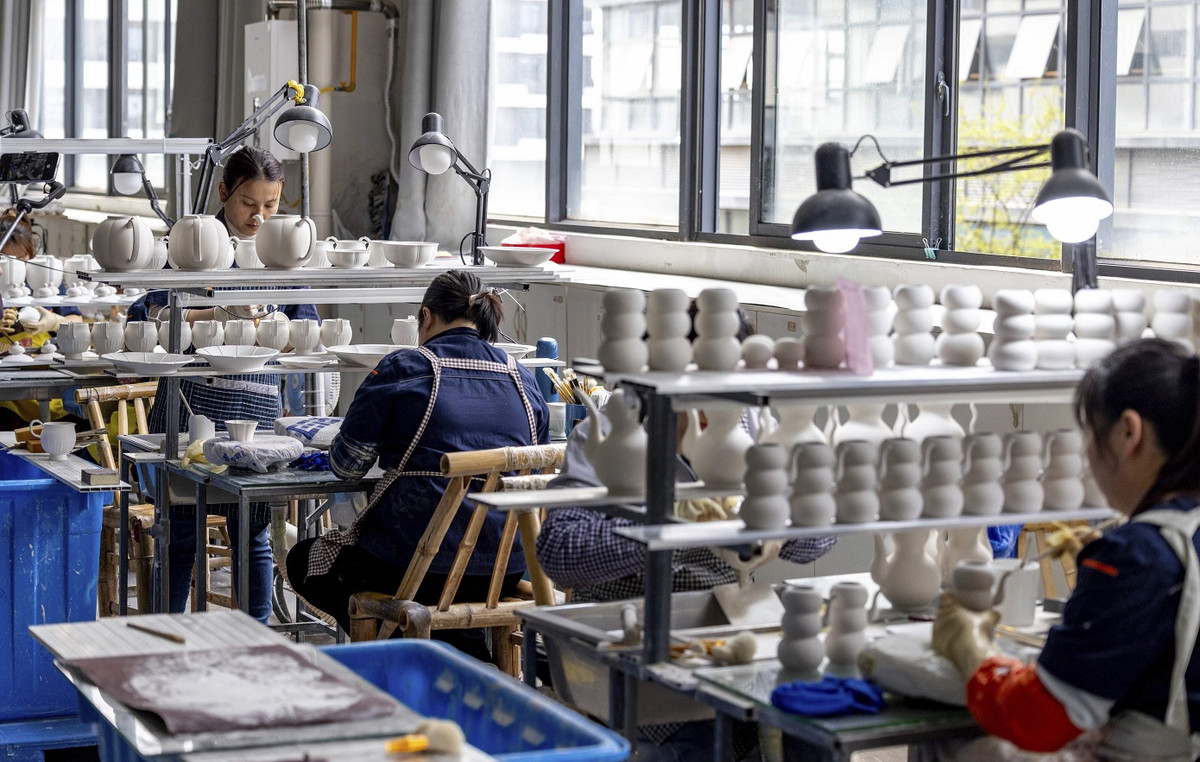Apple should launch this Wednesday (7) the iPhone 14, the new generation of the smartphone that revolutionized the telephone market. christened of far out (distant, in free translation, giving an idea of avant-garde), the conference will be broadcast on the company’s website and through its social media channels from 2 pm (Brasilia time).
As usual, the technology giant revealed little — officially — about the details of the new model, leaving experts and enthusiasts of the brand talking about possible innovations and fishing for information by indirect means.
One of the rumors that has stirred the market the most is a possible discontinuation of the “mini” version of the phone, which should be presented in four models: two with a screen size of 6.1 inches, two with 6.7 inches.
They will be, respectively, iPhone 14 and iPhone 14 Pro, and iPhone 14 Max and iPhone 14 Pro Max. The mini version may have been canceled due to low sales, according to rumors.
The look should also get a slight overhaul: since the Face ID feature was launched in 2017, iPhones have carried a notch at the top to house the technologies needed for functionality. This cutout should be reduced in the Pro versions and given another shape (apparently, in “i” lying down), while the others should remain with the traditional rectangle.

As for cameras, the iPhone 14 Pro is expected to have a 48-megapixel sensor — the current one is 12-megapixel — and can record in 8K, with more quality and professional video editing features.
As indicated by the invitation to the event, with an illustration of a starry sky, it is expected that the camera will also be able to photograph in low light environments with better quality. The autofocus of the front lenses should also see improvements.
Still on technical issues, the operating system processing must be increased — the iPhones 14 and 14 Max must follow the A15 Bionic, first introduced in the iPhone 13, while the 14 Pro and 14 Pro Max must already feature a new chip, the A16 Bionic. . The models may also contain a new cooling system, to prevent functionality from being impaired by excessive heat.
Another rumor is that the iPhone 14 and iPhone 14 Plus models have a new color option, this time in purple, which can change tone based on ambient lighting.
The new devices can also gain the Always on Display (always on screen, in free translation), which should display widgets and other information on the lock screen.
Prices in a turbulent economic context
How the company will price so many changes, however, remains to be seen. According to experts consulted by the CNN Brasil Business three of the four models are expected to be about $100 more expensive than the previous version:
- iPhone 14: $799 (same price as iPhone 13 launch)
- iPhone 14 Pro: $1,099
- iPhone 14 Max: $899
- iPhone 14 Pro Max: $1,199
This is because, in addition to the slightly more expensive technologies, Big Techs have had production cluttered by bottlenecks in supply chains. It is a crisis that dates back to 2020, when the pandemic closed ports and unbalanced the balance between supply and demand for semiconductor chips, but which has been intensified more recently by the “Covid-zero” policy in China.
“The price increase is taken for granted, because production has become much more expensive”, explains Arthur Igreja, a specialist in technology and innovation. “Technical developments, especially in high-end models, should justify the price increase, but semiconductor chips are also behind the new prices.”
At the same time, consumers in Apple’s main markets — notably the United States and Europe, although Brazil is not far behind — have faced a cost-of-living crisis due to escalating inflation. It is not known to what extent the economic scenario may impact sales data, since, as Lucas Cabral, from the Institute of Technology and Society in Rio de Janeiro says, “price has never been an issue for Apple’s captive audience”.
“Here in Brazil, an iPhone has already exceeded R$ 10,000 and sales continue to be a success. At the end of the day, the public ends up joining, also for loyalty plans with operators and installment conditions. It’s a matter of status, above all, having the latest model of the phone that was first associated with a lifestyle.”
Even abroad, the specialist predicts that sales will not be affected. “The minimum wage and purchasing power there are higher. US$ 800 is not an absurd price to pay on an iPhone in the United States, for example”, says Cabral.
At the limit, what can happen is an extension of the equipment use cycle. “The company tends to lower the price of the previous generation when it launches a new one. It is likely that the public will rush to buy the iPhone 13 now, or postpone the exchange until it gets a little cheaper”, says Artur Igreja.
The fact that Apple has a very loyal audience, according to experts, helps to minimize competition from Samsung’s Galaxy line devices, for example.
“Samsung has an exceptional performance in terms of resources, but for those who already use Apple devices, the change of operating system and the abdication of an entire ecosystem of devices that are very well integrated are factors that weigh”, says Church.
“Those who have more than one Apple device tend to be more loyal to the brand, while in the case of Samsung, this is not the case.”
That’s why, according to Cabral, there is a lot of expectation on the part of Apple’s loyal consumers about the next generation of the iPhone. Now, on the part of the tec community, the past enthusiasm seen in the launch events of the last decade has slowly dissipated.
“It’s been a while since we’ve seen a linear trajectory of Apple’s technological evolution, in the sense that it’s been harder to expect something that’s completely out of the loop,” says Church.
“Everyone expects evolutions in small steps. The single strongest expectation right now, in terms of the company, is when and how Apple will enter the metaverse and the augmented virtual reality debate.”
Apparently, it won’t be this Wednesday that the company will set foot in the metaverse. It’s for the next chapters.
* Under supervision of Ligia Tuon.
Source: CNN Brasil
Joe Jameson, a technology journalist with over 2 years of experience, writes for top online news websites. Specializing in the field of technology, Joe provides insights into the latest advancements in the industry. Currently, he contributes to covering the world stock market.







